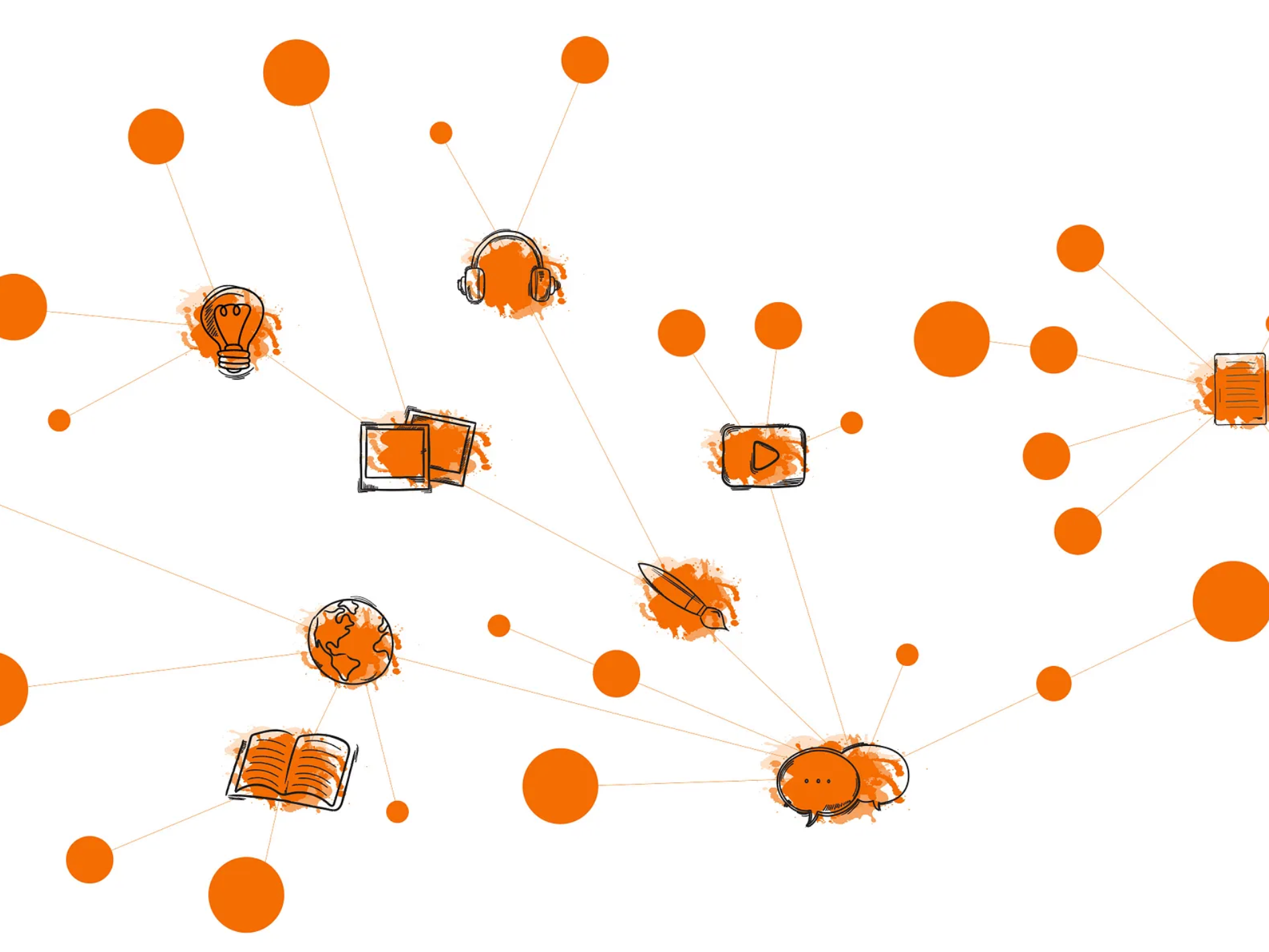The idea of the metaverse involves the possibility of interacting with virtual objects in a real-world environment. In this article, we talk about immersive experiences and extended realities.
I do not fall easily for buzzwords or follow trends just for the sake of “trendiness”. My understanding of what is happening in the design industry as well as in the technology field is based on thorough observation and deep research.
As a digital product designer, observation and research are part of my daily life. I am always assessing, learning, and digging deeper into problems, human behavior, and the world around me. These practices allow me to anticipate possible scenarios and imagine possible futures where a digital product may exist.
When you start paying more attention to the economical, social, cultural, political, and technological changes, you start to see how stories of the future or “futures” unfold. You can identify in which directions some society sectors start to move and also, the patterns and tendencies that start emerging from those transitions.
Understanding these possible paths give us a huge advantage and we can start preparing for design challenges that the future(s) may bring. We can also foresee new paths for a digital product and have a long-term action plan that not only provides clarity but also, flexibility to adapt to changes.
In this post, I’d like to discuss how recent narratives and changes are clear evidence of how more immersive experiences and extended realities will be part of our near future.
Note: there is a glossary of important terms at the end of the article, just in case some concepts are new to you.
A Pandemic as a Catalyst for a Digital Life
In 2020, the whole world went into lockdown due to the Covid-19 pandemic and human interactions went through an interesting transformation, to say the least. All of a sudden, most of our activities were 100% online: work, education, entertainment, health checks, and even dating and shopping. Face-to-face interactions in real life were replaced for more and more screen time and, we started to live an early version of a “metaverse”, a type of reality where most of our routines became digital.
Such a massive “digitalization” of habits, of course, led to a massive “digitalization” of services and jobs. And, for many, this “digitalization” was a question of survival. People with more “traditional’ jobs that required physical spaces started to look for new ways to provide their services (e.g. personal trainers using Zoom or social media for their classes) or to conduct some part of their business.
Another consequence of the pandemic was that with much more time at home, very few options to socialize and all entertainment venues closed, a large percentage of the population started to use video games. Videogaming became a way to reduce stress, meet and stay connected with friends, and be part of digital communities (a very important concept in the construction of a metaverse). The widespread adoption of games introduced many new users to interactive, immersive, and collaborative worlds.
Almost two years have passed but all these changes have certainly had a lasting and profound impact on the way we currently interact with people and go through our daily routines. It is evident that these behaviors and habits are very likely to stay even in a post-pandemic world.
Mindmap: Exploring possible futures based on current narratives.
The Foundational Pillars of the Metaverse
No one was prepared for the challenges we faced in 2020 and, although we relied on online tools to be able to perform our daily tasks, the technology still fell short to make a seamless transition into a 24/7 digital life.
The resources needed to implement virtual, highly immersive, and interactive worlds around us are still limited. However, the vision of how a virtual life could look like has been explored and inspired by sci-fi books, movies, and even, real attempts to create virtual worlds decades ago — remember Second Life in the early 2000s?
Also, the gaming industry is already paving the way for alternative and more enhanced realities. Take for example platforms like Fornite, Roblox, and Decentraland and how they allow users to create immersive and shared experiences in virtual universes (I will give some examples in the next section).
In addition, Augmented Reality and Virtual Reality have been used in different fields for numerous purposes such as entertainment, marketing, and education. One of the main downsides of AR/VR is the lack of devices that are comfortable to use for long periods of time. However, this could change if Apple launches its VR glasses later this year.
Better software and hardware will definitely help us create non-intrusive, more engaging interactions between users and their environment. A very successful implementation of a mixed reality project, namely Pokémon Go, in 2017, proved that users are ready for more participative and immersive ways to consume content as well as to interact with their surroundings.
Finally, it is also important to briefly discuss the role of blockchain technology and the recent revolution of the NTFs as enablers of digital investment portfolios and decentralized transactions. What does all this mean? In the simplest terms, we will be able to own properties, exchange services, and products, and build our own virtual micro-verses.
You may argue that some of these “trends” will be only momentaneous, but that was also said about the Internet in the 90s and then, about social media. All in all, there is always a specific point in time when different factors match the mature state of technology and at that moment, we fully integrate it into our daily lives.
Big Companies’ Bet on the Metaverse
Last October, Mark Zuckerberg announced the rebranding of Facebook to Meta and he presented the “metaverse” as:
the next frontier of the social connection and experiences that will deliver a sense of presence. (Mark Zuckerberg, 2021)
Such a massive shift in the company’s direction must, of course, have been supported by years of research. Also, it is not a coincidence that, in 2014, Facebook acquired Oculus, a maker of virtual reality gaming headsets.
Following Zuckerberg’s announcement, other major companies started to share their plans for the metaverse. In December last year, Nike acquired RTFKT studios, a leading brand that is working on the next generation of collectibles for the metaverse. Nike also hosted Nikeland, a three-week showroom event in Roblox. Also in December, Adidas announced a partnership with NFT project Bored Apes Yacht Club and started to build Adiverse.
Fashion seems to be the industry taking the lead in virtual events and augmented wearable art has a promising future in the metaverse. Decentraland has partnered with UNXD to host its first fashion week in March 2022 and H&M opened its first virtual store in the metaverse this January.
Music artists have been also exploring the possibilities of the metaverse to offer virtual, and interactive events to their fans. Ariana Grande and Travis Scott performed a series of concerts in Fortnite a few months ago.
Following the path of these big companies, I believe that this year will be the year for many industries and sectors to explore how they can find their place in the metaverse. Entertainment and fashion are just leading the way but the possibilities for marketing, education, and productivity will be endless.
Key Takeaway
The fact that a pandemic made millions of people turn to technology to carry out their daily routines accelerated the digitalization of our lives. According to the analysis of recent narratives, immersive experiences and extended realities are closer than we think.
As a designer, the key takeaway for me is the need to start exploring how these changes and new technologies can improve services, attend to users’ needs and eventually, make their lives easier. While I don’t fully agree with the description that Meta offers for the metaverse, I cannot deny that these technologies will be part of our lives. So, my goal will always be to work on creating seamless interactions between humans and technology and therefore, the extended realities of the future.
Glossary
Blockchain: “Blockchain is a shared, immutable ledger that facilitates the process of recording transactions and tracking assets in a business network. An asset can be tangible (a house, car, cash, land) or intangible (intellectual property, patents, copyrights, branding).” Source: IMB website.
Metaverse: The concept of a metaverse as a virtual reality world was first coined by author Neal Stephenson in his science fiction novel “Snow Crash” (1992). This term, however, became wildly popular last October, when Mark Zuckerberg announced the rebranding of Facebook to Meta, and with this new strategy, a new direction of the company to work on the future of social connection through mixed reality.
Mixed reality is also known as hybrid reality and extended reality. It implies the integration of a physical environment with digital content and/or virtual objects.
NFT stands for non-fungible token. The main characteristic of an NFT is that it is unique, there are no two NFTs that can be mutually interchangeable.
This article was first published at Medium.com Metaverse: How Stories of the Future Unfold





